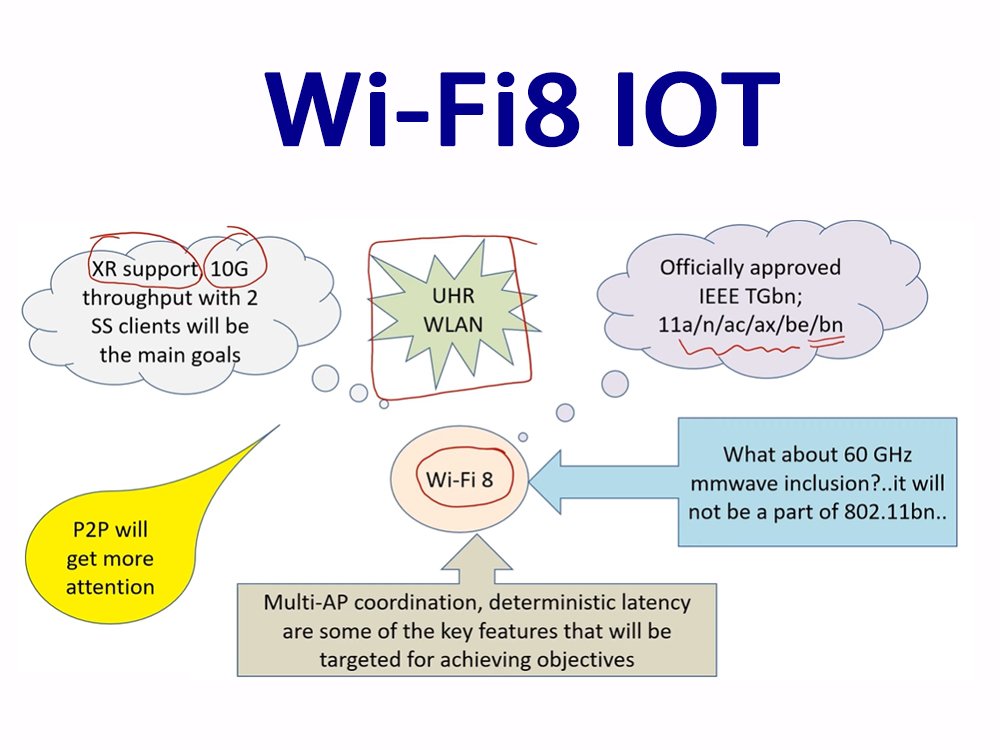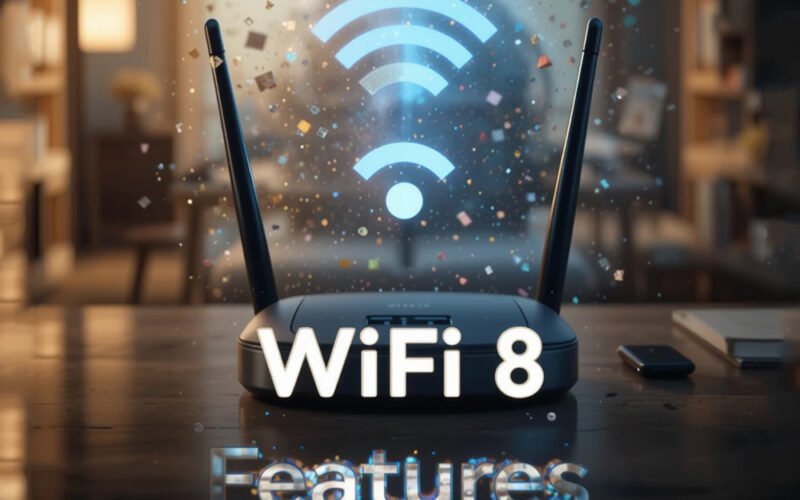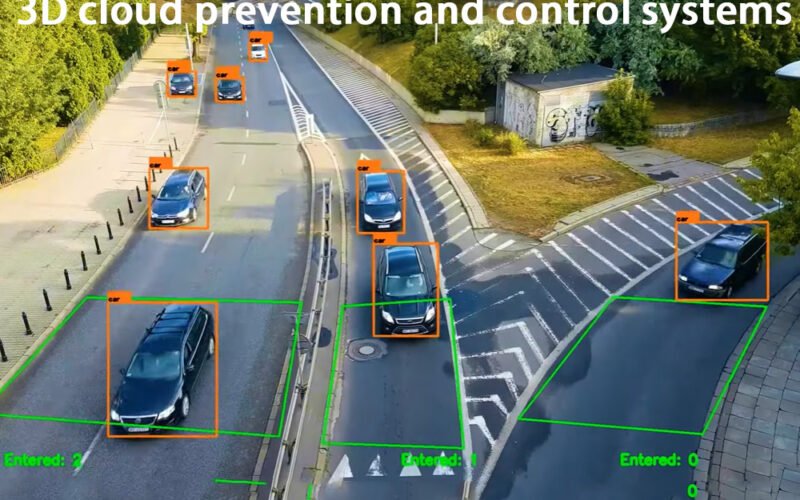
Will Wi-Fi 8 be Applied to the Internet of Things in the Future?
Wi-Fi 8 will be applied to the Internet of Things in the future, and this application will bring significant impact and changes.
The following is a detailed introduction to Wi-Fi 8 and its application in the Internet of Things.
Wi-Fi 8 Technology Overview
Wi-Fi 8, namely the IEEE 802.11bn standard, is the next generation of wireless network technology after Wi-Fi 7. The launch of this new technology marks a new step in wireless network technology, especially in optimizing connection performance and improving network reliability.
1. Core Features:
- Triple-band support: Wi-Fi 8 supports three frequency bands, 2.4GHz, 5GHz and 6GHz, ensuring compatibility with existing devices and providing a wider range of spectrum resources for selection.
- Ultra-high reliability: The design focus of Wi-Fi 8 is to improve actual transmission performance and connection stability, rather than simply increasing transmission speed. By introducing a series of new technologies, such as coordinated spatial reuse (Co-SR), coordinated beamforming (Co-BF), and dynamic subchannel operation (DSO), Wi-Fi 8 significantly improves network reliability and stability.
- High throughput: Although the maximum physical layer rate (PHY rate) of Wi-Fi 8 is similar to that of Wi-Fi 7, Wi-Fi 8 achieves higher throughput by optimizing network protocols and access mechanisms. The maximum throughput is expected to reach 46Gbps, which is a significant improvement over Wi-Fi 7.
- Low latency: Wi-Fi 8 reduces latency by optimizing network scheduling and access mechanisms. The best latency performance is expected to reach 0.1 milliseconds, which is critical for IoT applications that require real-time data transmission.
2. New technology introduction:
- Coordinated spatial reuse (Co-SR): By adjusting the signal transmission power of the access point to maintain good signal strength, the total system throughput is improved. Test results show that this function can increase the total system throughput by 15% to 25%.
- Coordinated Beamforming (Co-BF): It can coordinate the signal transmission direction between different access points and focus the signal on active devices, thereby effectively reducing interference. In MediaTek’s actual test, this technology has improved the throughput by 20% to 50% in home and public place tests during peak hours.
- Dynamic Subchannel Operation (DSO): It allows the network to adjust the subchannel allocation in real time according to the needs of the device, greatly improving efficiency. It is possible to increase the throughput by 80% on high-end devices.
- Multi-AP Coordination: By coordinating the work of multiple access points, the overall network performance is improved. This technology not only optimizes network coverage and capacity, but also reduces interference and latency.
- Distributed OFDMA Scheduling/Non-Preemptive Channel Access (DOS/NPCA): It improves the utilization of spectrum resources and the throughput of the network. It allows multiple devices to transmit data simultaneously in the same frequency band, improving the concurrency performance and fairness of the network.
- Dynamic Resource Unit (dRU): Designed for low-power indoor (LPI) devices in the 6GHz band, it allows the allocated tones to be distributed over a wider bandwidth, thereby reducing the number of tones per MHz. This results in higher uplink OFDMA transmission power for such devices.
Overview of the Internet of Things and its development trends
The Internet of Things (IoT) refers to a huge network formed by combining information sensing devices such as radio frequency identification (RFID), infrared sensors, global positioning systems, laser scanners, etc. with the Internet. This network allows objects to exchange information and communicate with each other to achieve intelligent identification, positioning, tracking, monitoring and management.
1. Application areas of the Internet of Things:
- Smart home: Through the Internet of Things technology, home appliances can be intelligently controlled, such as smart lights, smart curtains, smart air conditioners, etc.
- Smart city: Internet of Things technology plays an important role in urban transportation, public safety, environmental protection and other fields, such as intelligent transportation systems, intelligent security systems, etc.
- Industrial Automation: IoT technology can be applied to equipment monitoring, fault diagnosis and remote maintenance on factory production lines, etc., to improve production efficiency and product quality.
- Telemedicine: IoT technology can realize remote monitoring and diagnosis of medical equipment, providing patients with more convenient and efficient medical services.
2. Development Trends of IoT:
- Large-Scale Connection: With the continuous development of IoT technology, more and more devices will be connected to the network, forming a huge IoT ecosystem.
- Low Power Consumption: In order to meet the long-term operation requirements of IoT devices, low-power technology will become an important direction for the development of IoT.
- Intelligence: IoT devices will have more intelligent functions, such as autonomous learning, autonomous decision-making, etc., to provide users with more convenient and efficient services.
- Security: With the popularization of IoT devices and the expansion of application scenarios, security issues will become more and more prominent. Therefore, strengthening the research on IoT security technology will become an important development direction.
Application Prospects of Wi-Fi 8 in IoT
Wi-Fi 8 for IoT
As the next generation of wireless network technology, Wi-Fi 8 has broad application prospects in IoT.
The following is a detailed analysis of Wi-Fi 8 applications in the Internet of Things:
1. Improve the connection performance and stability of IoT devices:
- The high reliability and low latency characteristics of Wi-Fi 8 will significantly improve the connection performance and stability of IoT devices. This is crucial for IoT applications that require real-time data transmission, such as security monitoring in smart homes and production line monitoring in industrial automation.
- By introducing technologies such as coordinated spatial reuse (Co-SR) and coordinated beamforming (Co-BF), Wi-Fi 8 can optimize resource sharing and signal transmission directions between multiple access points, thereby effectively reducing interference and improving throughput. This will enable IoT devices to maintain good connection performance and stability even in densely deployed environments.
2. Expand IoT application scenarios:
- The high throughput and low latency characteristics of Wi-Fi 8 will make IoT application scenarios more extensive. For example, in the field of telemedicine, Wi-Fi 8 can achieve real-time transmission of data such as high-definition images, audio, and surgical instructions, providing more secure, reliable and efficient communication support for telemedicine surgery.
- In the field of smart cities, Wi-Fi 8 can support the connection of large-scale devices and real-time transmission of data, providing more stable and efficient network support for intelligent transportation systems, intelligent security systems, etc.
- In the field of industrial automation, Wi-Fi 8 can realize the real-time transmission and processing of functions such as equipment monitoring, fault diagnosis and remote maintenance on factory production lines, improving production efficiency and product quality.
3. Promote the integration of IoT and artificial intelligence:
- The high performance of Wi-Fi 8 will make the integration of IoT devices and artificial intelligence technology closer. Through technical means such as data analysis to optimize network layout and signal distribution, Wi-Fi 8 can support the implementation of more intelligent IoT application scenarios. For example, in the field of smart homes, Wi-Fi 8 can support the autonomous learning and autonomous decision-making functions of smart home systems, providing users with more convenient and efficient services.
- In the field of industrial automation, Wi-Fi 8 can support the implementation of intelligent monitoring and maintenance functions on factory production lines, predict equipment failures through data analysis and perform maintenance in advance, and improve production efficiency and product quality.
4. Promote the development and innovation of IoT technology:
- The launch of Wi-Fi 8 will promote the development and innovation of IoT technology. With the continuous maturity of Wi-Fi 8 technology and the expansion of application scenarios, IoT devices will have more intelligent functions and application scenarios. This will promote the continuous development and innovation of IoT technology and provide more efficient and convenient network support for future smart cities, smart homes, industrial automation and other fields.
Challenges and solutions faced by Wi-Fi 8 in IoT
Although Wi-Fi 8 has broad application prospects in IoT, it still faces some challenges. The following is an analysis of these challenges and corresponding solutions:
1. Challenges:
- Spectrum resource allocation: With the continuous increase in IoT devices, the allocation of spectrum resources will become more tense. How to use spectrum resources reasonably and efficiently has become an important issue.
- Security issues: The security issues of IoT devices are becoming increasingly prominent. How to ensure the data security and privacy protection of IoT devices has become an urgent problem to be solved.
- Power consumption issues: IoT devices need to run for a long time, so power consumption has become an important consideration. How to reduce power consumption while ensuring performance has become a problem that needs to be solved.
2. Solution:
- Dynamic spectrum optimization: Through dynamic spectrum optimization technology, the allocation and scheduling of spectrum resources can be adjusted in real time according to the needs of the device, thereby improving the utilization rate of spectrum resources and the throughput of the network.
- Strengthen security technology research: Strengthen the research on IoT security technology, such as using encryption technology, identity authentication technology and other means to ensure the data security and privacy protection of IoT devices.
- Low-power technology: Use low-power technology, such as low-power chips, low-power communication protocols, etc. to reduce the power consumption of IoT devices. At the same time, by optimizing network protocols and access mechanisms, the energy efficiency of IoT devices can be further improved.
Conclusion and Outlook
In summary, as the next generation of wireless network technology, Wi-Fi 8 has broad application prospects in the Internet of Things. By improving the connection performance and stability of IoT devices, expanding IoT application scenarios, promoting the integration of IoT and artificial intelligence, and promoting the development and innovation of IoT technology, Wi-Fi 8 will inject new vitality and impetus into the development of the Internet of Things.
However, the application of Wi-Fi 8 in the Internet of Things still faces some challenges, such as spectrum resource allocation, security issues and power consumption issues.
In order to solve these challenges, it is necessary to adopt dynamic spectrum optimization, strengthen security technology research, and low-power technology. I believe that in the future development, Wi-Fi 8 will continue to promote the progress and innovation of IoT technology and provide more efficient and convenient network support for future smart cities, smart homes, industrial automation and other fields.
About IoT Cloud Platform
IOT Cloud Platform (blog.iotcloudplatform.com) focuses on IoT design, IoT programming, security IoT, industrial IoT, military IoT, best IoT projects, IoT modules, embedded development, IoT circuit boards, IoT solutions, Raspberry Pi development and design, Arduino programming, programming languages, RFID, lora devices, IoT systems, sensors, smart homes, smart cities, new energy, semiconductors, smart hardware, photovoltaic solar energy, lithium batteries, chips and other scientific and technological knowledge.
FAQs
The following are common questions and answers about the future application of Wi-Fi 8 in the Internet of Things:
Wi-Fi8 IoT refers to the use of Wi-Fi8 technology to connect various physical devices, sensors, software, etc. to realize data collection, exchange and analysis, thereby forming an intelligent management and control system network. Through Wi-Fi8 technology, the Internet of Things can achieve efficient, stable and low-latency communication between devices, providing strong support for industrial automation, autonomous driving, telemedicine and other fields.
Wi-Fi 8 is expected to significantly improve speed, coverage, energy efficiency, and frequency band utilization to better meet the needs of IoT devices for high-speed, stable, and low-latency network connections.
IoT devices may encounter frequency band interference, power limitations, and compatibility issues when using Wi-Fi 8. In addition, how to ensure that devices can be stably connected in different environments is also a major challenge.
By improving coverage and frequency band utilization, Wi-Fi 8 enables IoT devices to be stably connected at a longer distance, while reducing frequency band interference and improving overall network performance.
When using Wi-Fi 8, IoT devices can ensure the security of data transmission by adopting the latest encryption technology and security protocols. In addition, regular firmware and software updates are also important measures to keep devices secure.
Wi-Fi 8’s improvements in energy efficiency help extend the battery life of IoT devices. By optimizing network connection and data transmission process, Wi-Fi 8 can reduce the energy consumption of devices, thereby extending their use time.
IoT devices need to support multi-band and multi-mode operation to adapt to the Wi-Fi 8 standards of different countries and regions. In addition, device manufacturers also need to pay close attention to changes in international standards and regulatory requirements to ensure the compliance of devices.
The application prospect of Wi-Fi 8 in the Internet of Things is broad. With the continuous increase of IoT devices and the increasing complexity of network requirements, Wi-Fi 8 will provide faster, more stable and more secure network connections, and promote the development and application of IoT technology.
The main differences between Wi-Fi 8 and Wi-Fi 6 are reflected in speed, performance, efficiency and security, as follows:
Speed and performance: The data transmission speed provided by Wi-Fi 6 is lower than that of Wi-Fi 8, but it is already considerable. Specifically, Wi-Fi 6 can reach a maximum speed of 9.6Gbps, while Wi-Fi 8 further increases it to 6.9Gbps (Note: There may be errors in the statement here, because the new generation of technology usually provides higher speeds, but based on current information, we assume that this means that Wi-Fi 8 may reach this speed in certain specific scenarios or test conditions while maintaining other performance advantages, or that this speed is an estimate and is lower than the maximum speed of Wi-Fi 6. The actual product performance may be different. However, the more common understanding is that Wi-Fi 8 will provide higher speeds than Wi-Fi 6, but the specific value depends on the actual product).
However, it is worth noting that while maintaining high speeds, Wi-Fi 8 also focuses on improving network reliability and low latency performance, which is particularly important for IoT applications.
Efficiency: Wi-Fi 6 can effectively manage network traffic and communication between devices, while Wi-Fi 8 further optimizes these functions, so that when a large number of devices are online at the same time when the network is connected, it can also maintain high efficiency. This is very critical for scenarios with dense devices in the IoT.
Security: Wi-Fi 6 uses more powerful encryption algorithms and authentication methods than previous versions, and Wi-Fi 8 further improves security on this basis to better protect network data and user privacy.



